Submitted by WA Contents
Austrian Pavilion presents "Thoughts Form Matter" exploring spatial metaphors at Venice Biennale
Italy Architecture News - Jul 13, 2018 - 03:53 19219 views

The Pavilion of Austria has installed a wooden framework to explore different spatial metaphors at the 2018 Venice Architecture Biennale.
Called Thoughts Form Matter, the exhibition is designed as a plea for the power of architecture and as an intellectual analysis of the world and for the freedom to design spaces that are not subject to functional and economic constraints.

Exhibition View with “Sphere 1:50.000“ (LAAC) “Layers of Atmosphere“ (Henke Schreieck) and “Beauty=Function“ (Sagmeister & Walsh). Image © Martin Mischkulnig
At the pavilion, LAAC, Henke Schreieck and Sagmeister & Walsh have created a conceptually and materially complex spatial installation which draws together inside and outside, vertical and horizontal, the historic pavilion and the language of contemporary architecture and design.
Thoughts Form Matter gives rise to spatial metaphors. Concepts such as "deviation", "atmosphere" and "beauty" become tangible
in the three-part, converging spatial installation. The three teams interpret the general subject of the Venice Architecture Biennale 2018 "Freespace" as both a spatial and a spiritual construct, as a complex dynamic system and as a versatile realm which is shaped by coexistence.
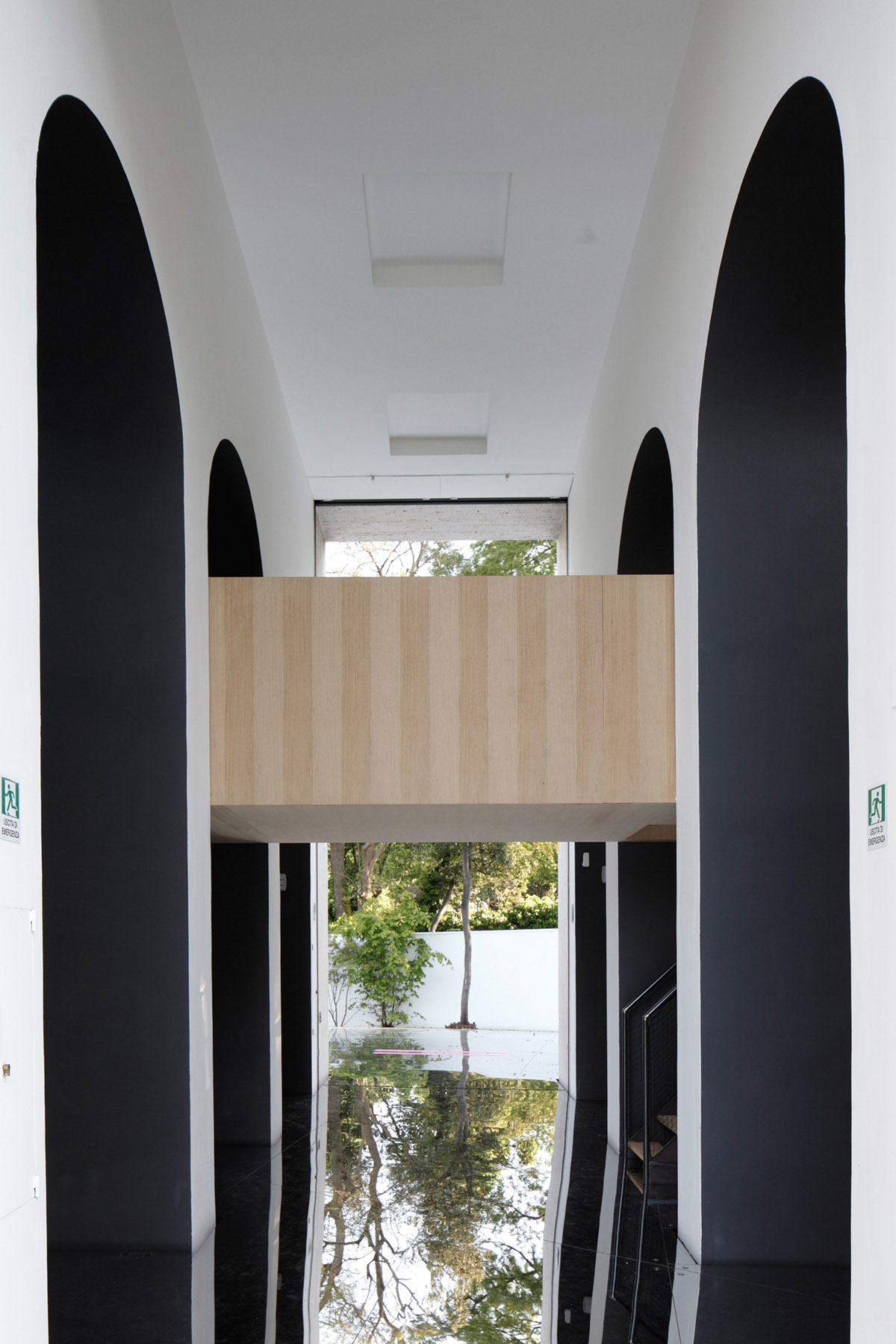
Exhibition View with “Sphere 1:50.000“ (LAAC) and “Layers of Atmosphere“ (Henke Schreieck). Image © Martin Mischkulnig
"Today, architecture is a broad field with links to many other disciplines. The complexity of the requirements facing today’s architects and designers means that permanent, intellectual reassurance is required if architecture and design are not to dwindle to pragmatism or merge into a neoliberal logic that is dominated by moments of rationalisation and a search for efficiency in which architecture finds its niche as a servant of an aesthetic economy," said Verena Konrad, curator of the Pavilion.
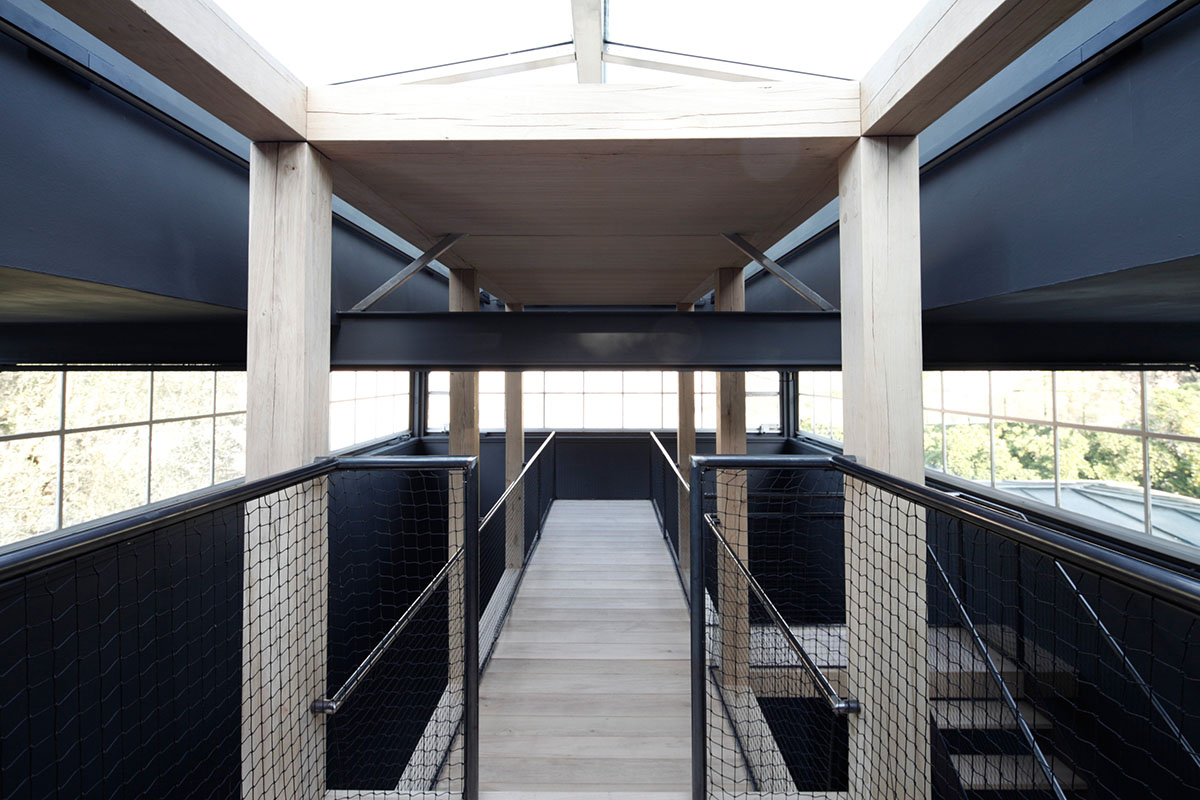
Exhibition View with “Layers of Atmosphere“ (Henke Schreieck). Image © Martin Mischkulnig
"Designers need theories, concepts, a formulated approach in order to be able to critically reflect upon the political, social and cultural implications of their own actions. LAAC, Henke Schreieck and Sagmeister & Walsh describe their work as an abstract thought-process that seeks a concrete form in which aesthetic, function and construction are in equilibrium. The basis of this is always an analysis of the task in its widest social context and of the production conditions which are equally part of this cultural setting."
"The contribution “Thoughts Form Matter” draws attention to this complexity. To this end, the three invited teams have addressed the spatial and the historic context of La Biennale di Venezia, the general subject of “Freespace”, the location and its references, La Biennale di Venezia as a significant institution and the pavilion as a setting to which visitors also respond," continued Konrad.
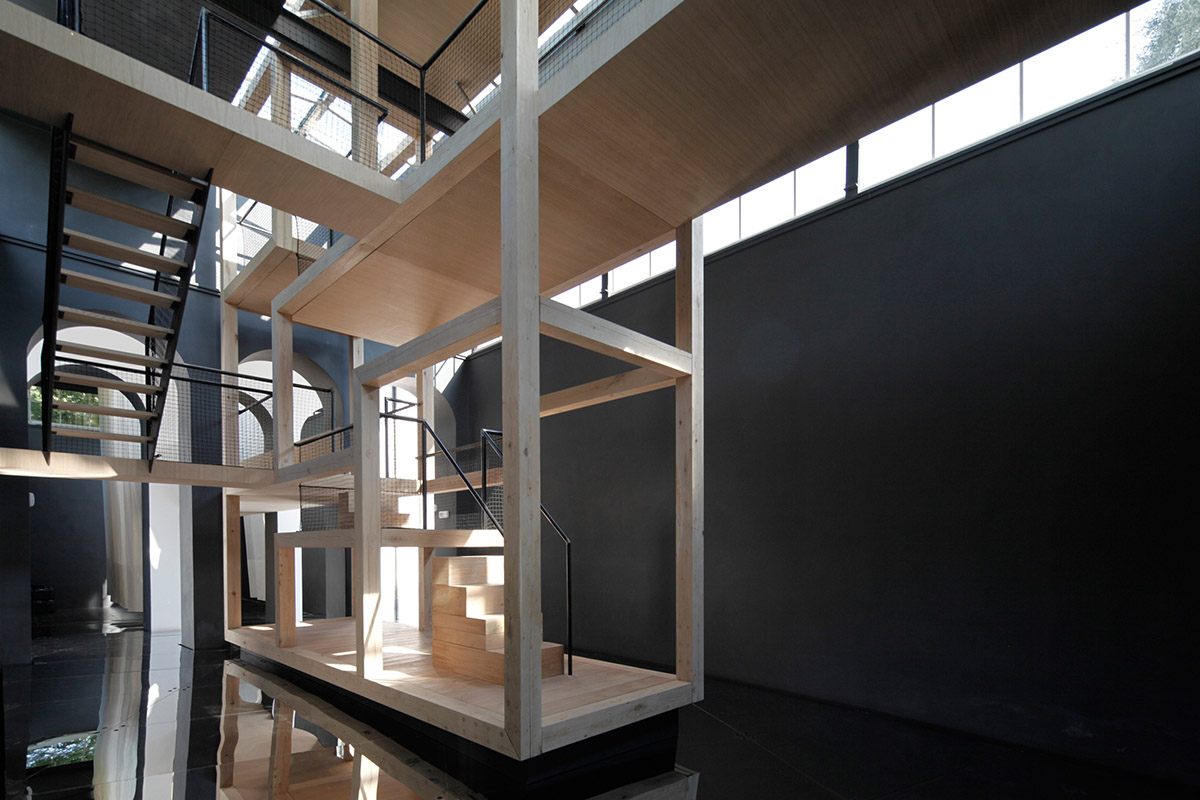
Exhibition View with “Layers of Atmosphere“ (Henke Schreieck). Image © Martin Mischkulnig
"Layers of Atmosphere" is a two-part spatial installation with which Henke Schreieck create different atmospheres in two identical volumes: bright and dark, dense and light, structural and poetic, west and east encounter each other as contrasts. Constructional method, materiality, colour and atmospheric lighting generate dual spatial qualities.
Visitors step from an accessible wooden structure onto a bridge and then plunge into the light space made out of paper, a space whose materiality adds noise, time and movement as one moves across it. Free space is not just unbuilt space but also the effect of atmospheres that result from perception, connection and context.
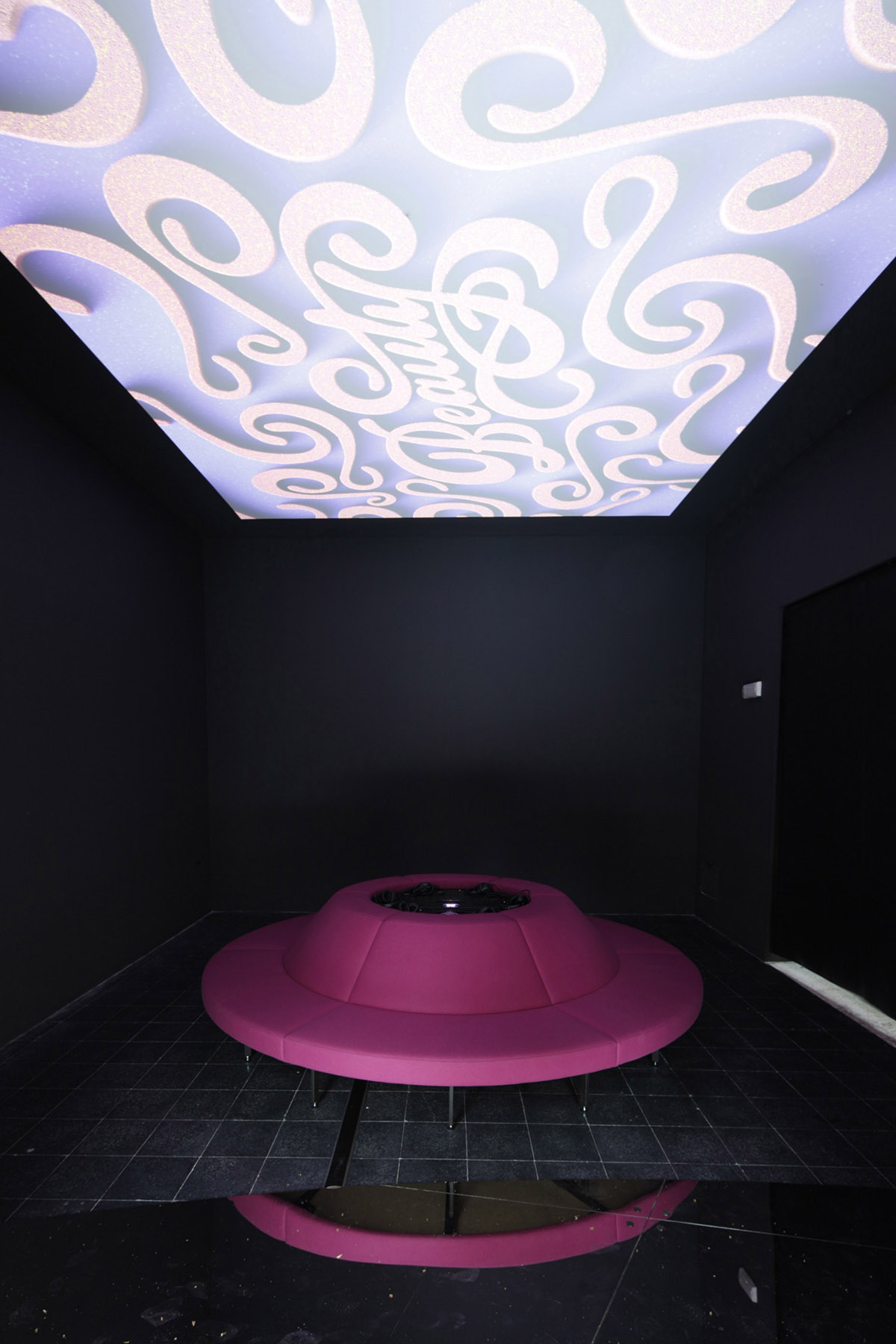
Exhibition View with “Beauty=Function“ (Sagmeister & Walsh). Image © Martin Mischkulnig
"Beauty = Function" raises the question of the aesthetic quality of architecture and the need for the beautiful in daily life. In two projections enriched with imagery from contemporary (pop) culture they address the controversial subject of function and beauty. Here, materiality and time play a completely different role and the focus is on digital beauty and its influence on how architecture is received.
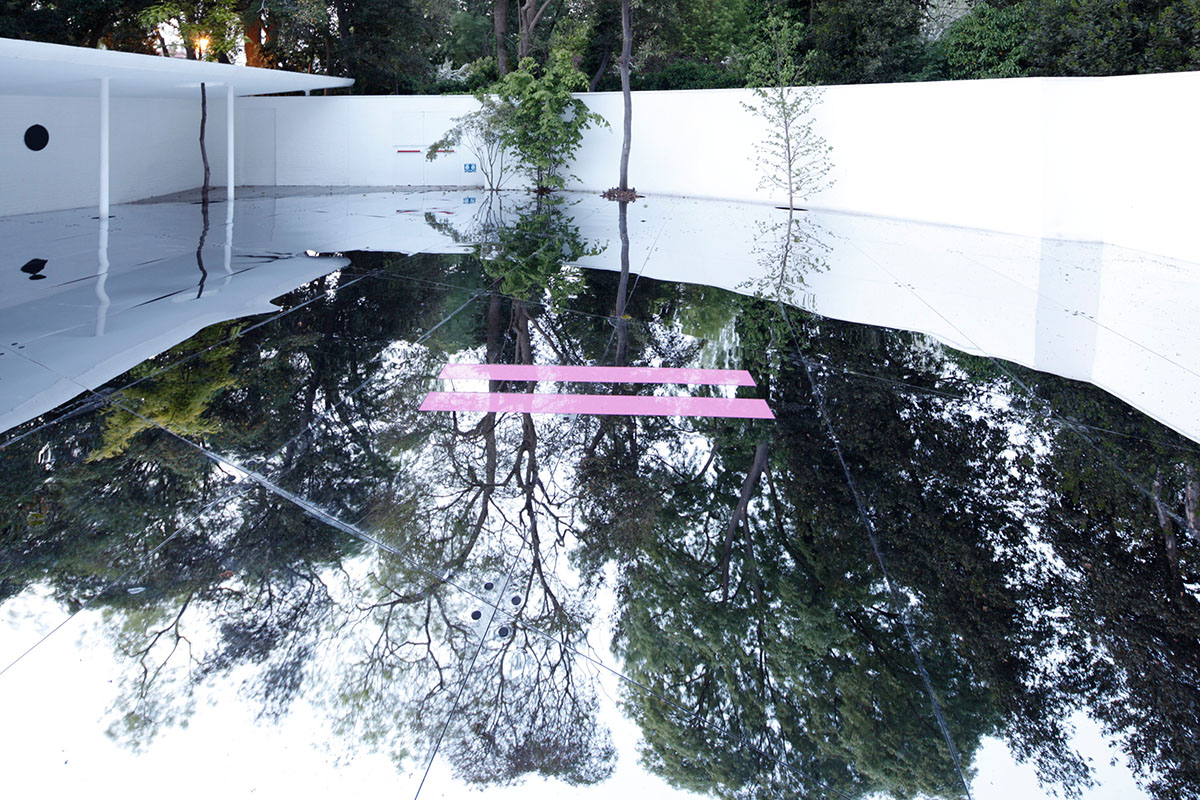
Exhibition View with “Sphere 1:50.000“ (LAAC). Image © Martin Mischkulnig
In the work "Sphere 1:50.000" LAAC addresses free space in the form of a spatial deviation. A curved, circular surface is inscribed within the pavilion, revealing itself as the segment of a sphere. A reference to the earth at a scale of 1:50,000, the spherical volume decentralises the symmetrical building. The reflective surface of the curved floor opens up a multitude of spatial relationships. One sees oneself where one isn’t while, at the same time, one visualises the place in which one is standing.

Exhibition View with “Sphere 1:50.000“ (LAAC). Image © Martin Mischkulnig
Thus, the mirror becomes an instrument of deviation rather than symmetry and opens up visual and notional spaces of possibility. This place oscillates between the absolute spatial idea of the pavilion and a relative approach which establishes relationships between and combines the various elements of the exhibition.
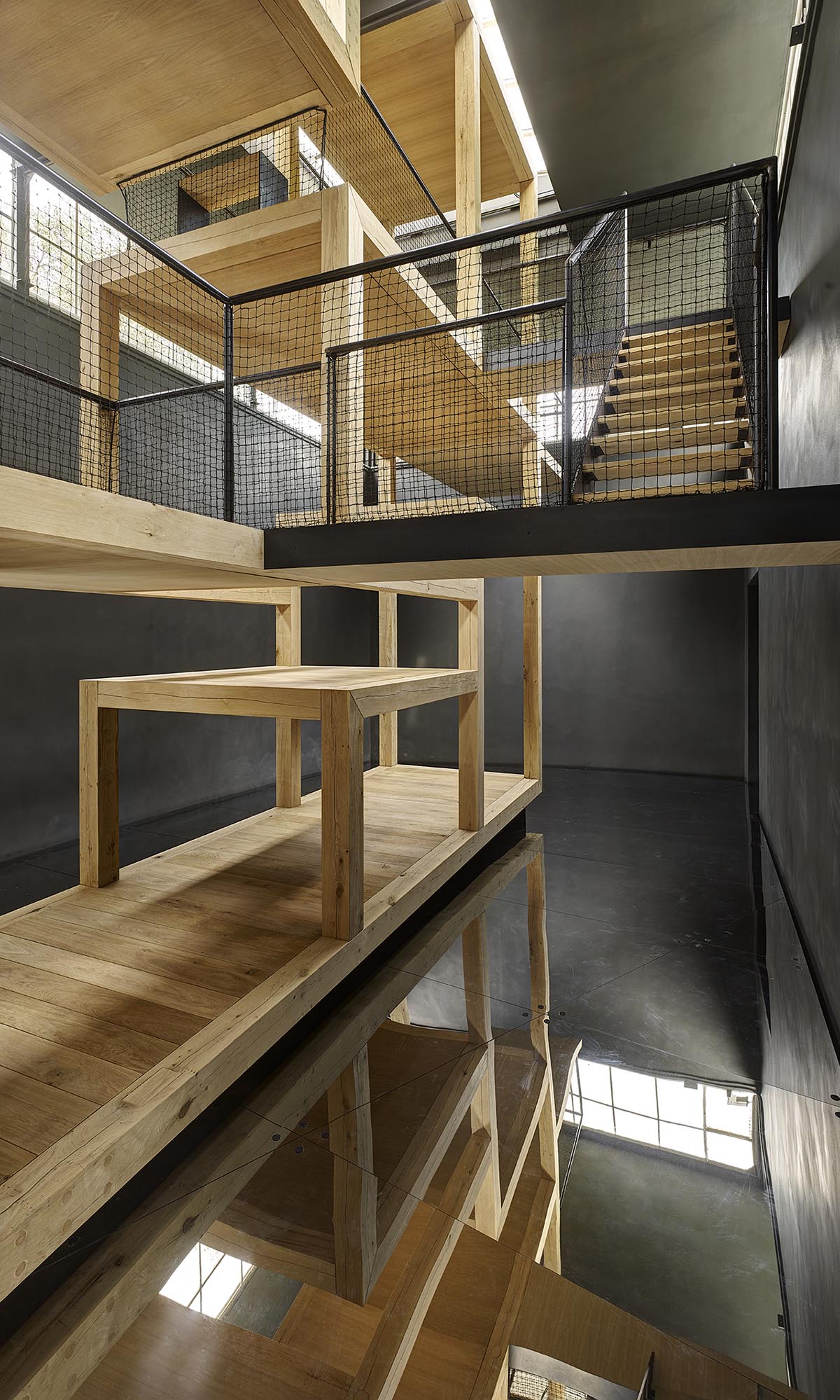
Exhibition View with “Layers of Atmosphere“ (Henke Schreieck). Image © Marc Lins
"Austria’s participation in the Biennale Architettura represents an important contribution to the international discourse on architecture and the built environment. At the same time one of the best-known architecture exhibitions offers the unique opportunity to draw attention to the current state of the architectural scene in Austria," said Gernot Blümel, Federal Minister for EU, Art, Culture and Media.

Exhibition View with “Layers of Atmosphere“ (Henke Schreieck). Image © Marc Lins
The 2018 Venice Architecture Biennale, curated by Yvonne Farrell and Shelley McNamara under the title of Freespace, will be on view from May 26th to November 25th, 2018 in the Giardini and the Arsenale, and around other venues in Venice.
Top image: Exhibition View with “Layers of Atmosphere“ (Henke Schreieck). Image © Martin Mischkulnig
